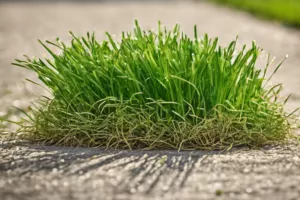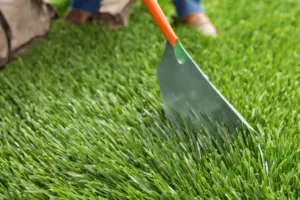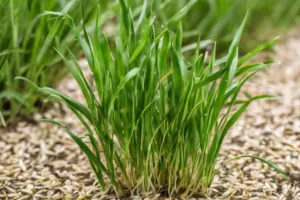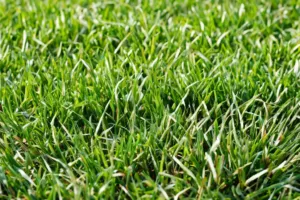
Understanding the Drought Tolerance of St. Augustine Grass
St. Augustine grass is a popular turfgrass choice for homeowners and landscapers due to its adaptability to warmer climates and its lush, carpet-like appearance. However, one of the frequent inquiries that many people have about this type of grass is its drought tolerance. This is particularly crucial in areas where water restrictions are in place or for those who wish to maintain a green lawn with minimal water usage.
In general, St. Augustine grass exhibits a moderate level of drought tolerance. This means it can withstand short periods of drought without severe damage, but it may not thrive in extended periods of water scarcity. It’s important to note that the drought tolerance of St. Augustine grass can vary depending on the specific variety and local growing conditions.
Factors Influencing Drought Tolerance in St. Augustine Grass
Variety of St. Augustine Grass
There are several varieties of St. Augustine grass, and each one has different levels of drought tolerance. For instance, the ‘Floratam’ variety is known to have a higher drought tolerance than other varieties, while ‘Raleigh’ and ‘Seville’ are less drought-tolerant. These differences can significantly impact the lawn’s performance during periods of low rainfall.
Soil Conditions
Another important factor that influences the drought tolerance of St. Augustine grass is the soil condition. Well-drained, fertile soils can provide the grass with the necessary nutrients and moisture retention capabilities to withstand periods of drought better. On the other hand, poor soil conditions can exacerbate the effects of drought on St. Augustine grass.
Proper Lawn Maintenance
Proper lawn maintenance, including regular mowing, fertilization, and pest control, can also improve the drought tolerance of St. Augustine grass. Healthy, well-maintained lawns are generally more resilient and can recover more quickly from periods of drought.
Considerations for Drought Prone Areas
For those living in drought-prone areas, it may be beneficial to consider other types of turfgrass that are more drought-tolerant. Bermuda grass, for instance, is known for its superior drought tolerance compared to St. Augustine grass. However, it’s also important to consider other factors, such as the grass’s appearance and maintenance requirements, when choosing a lawn grass.
Additionally, if St. Augustine grass is preferred, select a variety with higher drought tolerance, such as ‘Floratam’, and ensure that the lawn is properly maintained to enhance its resilience to drought.
Practical Tips for Enhancing Drought Tolerance
Watering Techniques
One of the best ways to enhance the drought tolerance of St. Augustine grass is through proper watering techniques. Rather than frequent light watering, it’s generally recommended to water the grass deeply but infrequently. This encourages the grass to develop deeper roots, which can better access moisture in the soil during periods of drought.
Proper Fertilization
Regular fertilization can also enhance the drought tolerance of St. Augustine grass. A healthy, well-fed lawn is generally more resilient and can recover more quickly from stressors such as drought.
Understanding the drought tolerance of St. Augustine grass is crucial for maintaining a lush, green lawn, especially in areas prone to periods of low rainfall. While St. Augustine grass has a moderate level of drought tolerance, proper lawn maintenance and care can enhance its resilience and recovery from drought.

Bob Green, a passionate lawn care enthusiast with over two decades of landscaping experience, is this website’s proud owner. His vast knowledge of horticulture and dedication to helping homeowners maintain beautiful lawns are reflected in the valuable content he shares on his platform. John has always been interested in Agrostology.














